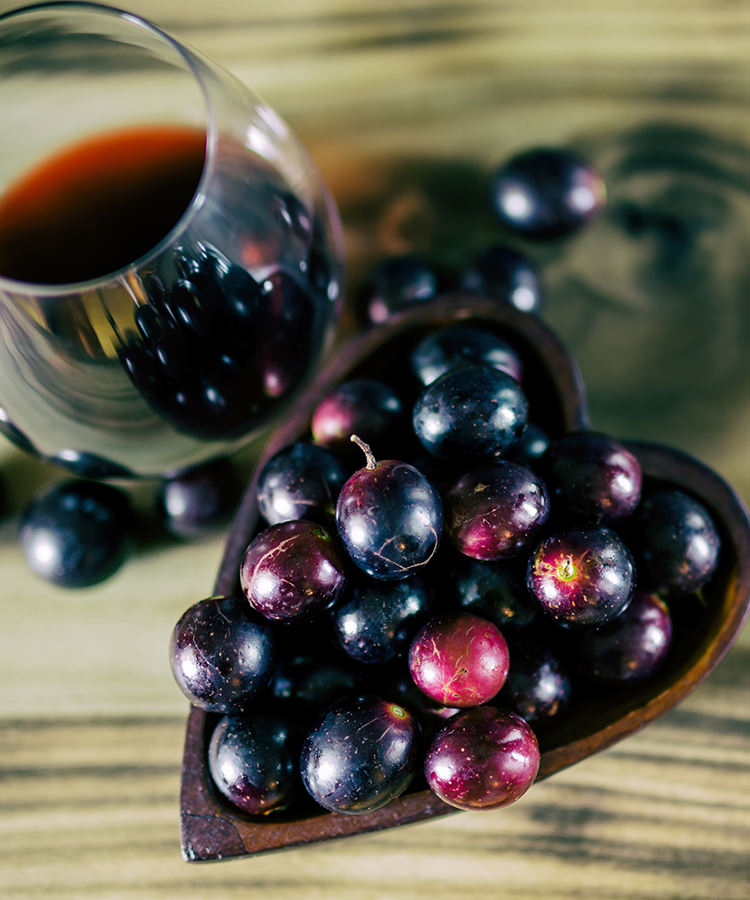
While it may not be the most popular wine on the market, Muscadine is a must-try for all American wine lovers. Why, you may ask? Believe it or not, Muscadine is one of the most patriotic wines of them all; that’s to say, it is one of the only wines on the market made with true American grapes.
Muscadine, not to be confused with Muscat or Moscato, is a grape variety native to America that has been used for making dry wine and port-style wine since the 16th century. The grape’s winemaking history started near St. Augustine, Florida, but presently finds its roots all over the southeastern states of America. Muscadine tends to fall on the sweeter side because winemakers will often add sugar while producing the wine.
Muscadine (scientifically referred to as vitis rotundifolia) is most productive in warm, humid climates. The grapes range from bronze/copper to nearly black in color, though many will remain green throughout ripening. The berries can be eaten on their own, though their thick skins make them difficult to chew; eating them generally requires puncturing the skin to suck out the flesh inside! These thick skins, however, make them super rich in polyphenols, a.k.a., the good stuff inside red wine skins that provide serious antioxidants.
Due to their array of colors, Muscadine grapes can produce both white and red wines. Both wines are generally medium-bodied, with white wines presenting flavors of banana and white flowers, and red wines showing flavors of ripe red fruit. Salt, lime, or pine resin notes may also be present on the palate. Due to the wine’s easily oxidative nature, consuming Muscadine wines young is advised. Chill both reds and whites for maximum enjoyment.
Believe it or not, ripe Muscadine grapes can grow to be as large as golf balls. Their immense size requires them to be hand-harvested, with a single vine capable of producing nearly 100 pounds of grapes at a time. Due to their naturally low sugar content, the wines are often bumped with sugar during the winemaking process to up their alcohol content, though dry versions of Muscadine do exist.
Next time the mood for all-American strikes, forget your usual California favorite and seek out a bottle of Muscadine for a fine, one-of-a-kind experience.
